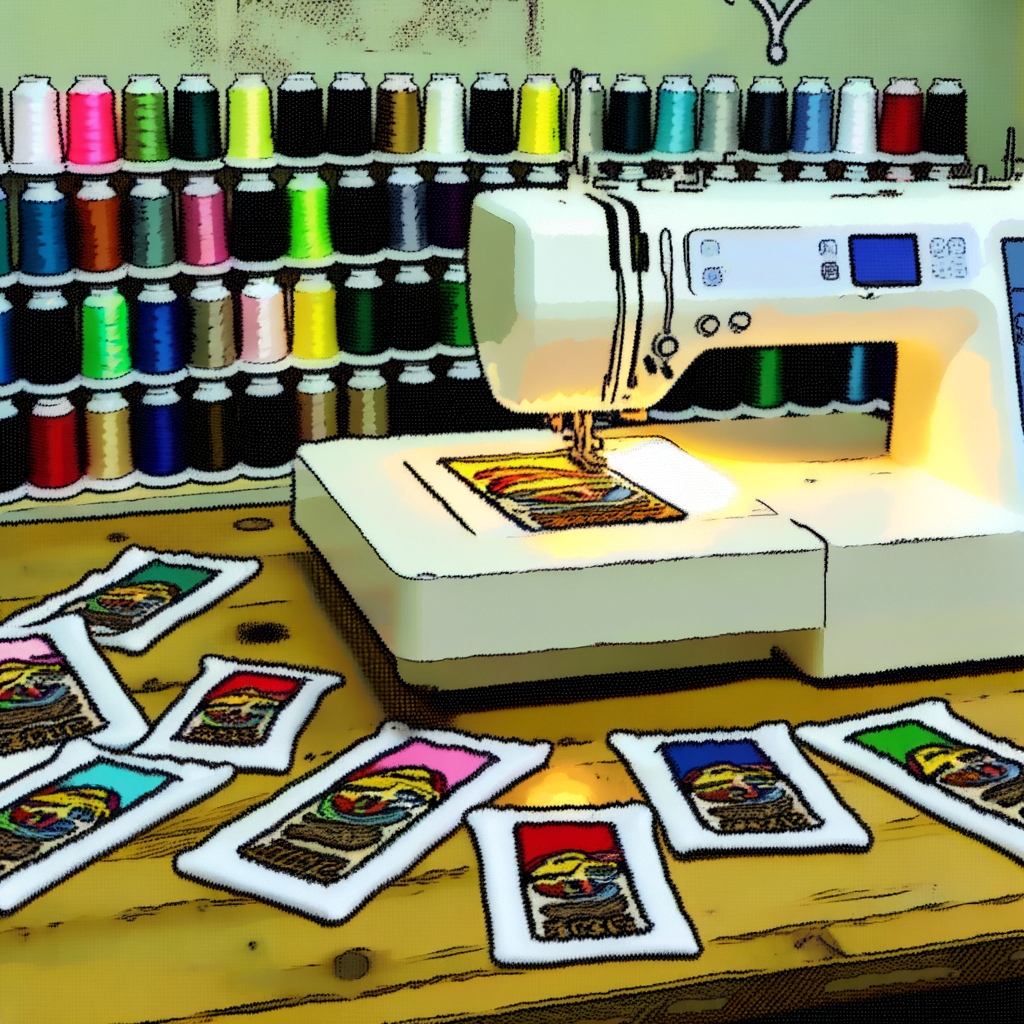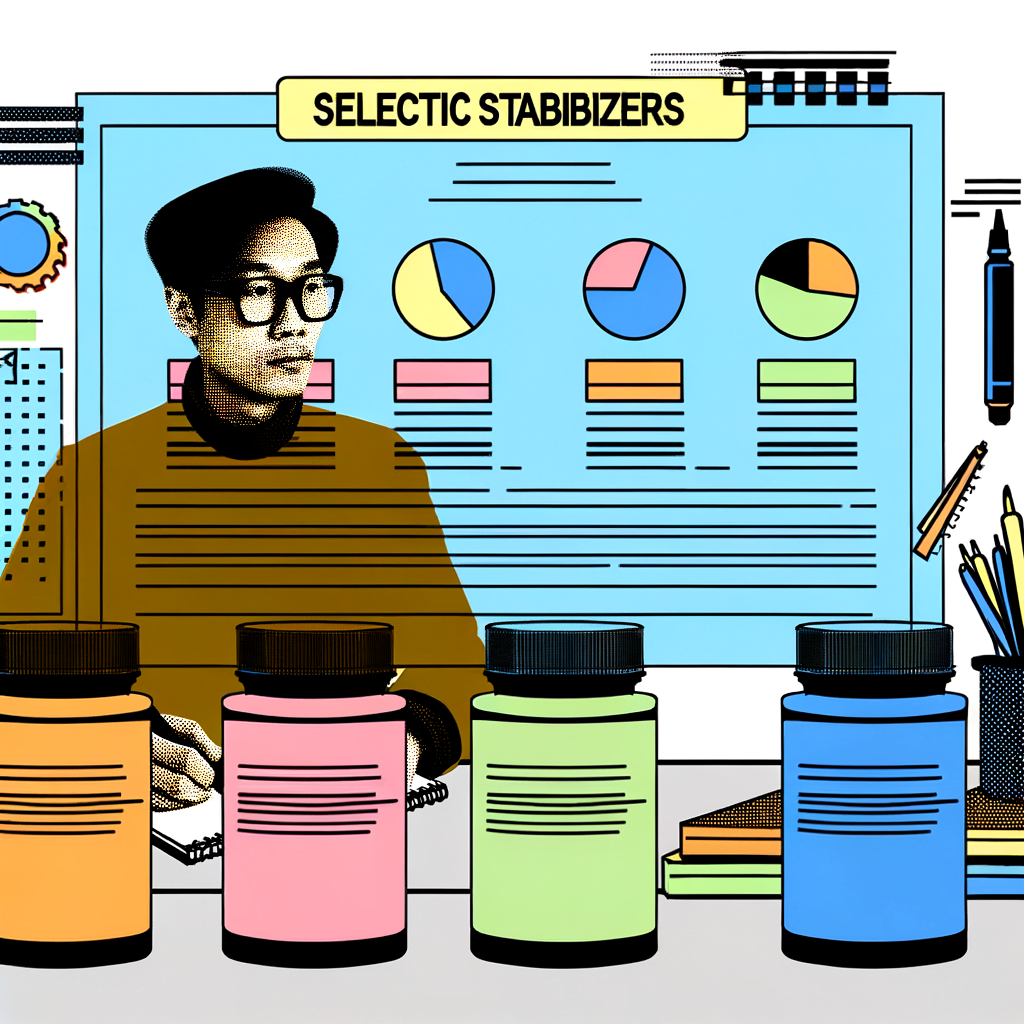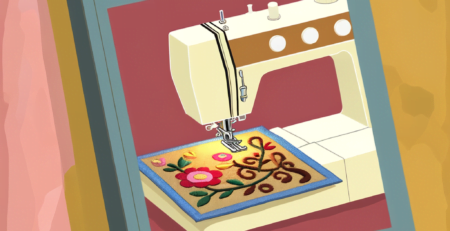Scegliere lo stabilizzatore giusto per il tuo progetto
Sommario
“Ensure Flawless Performance – Select the Perfect Stabilizer for Your Project!”
introduzione
Selecting the appropriate stabilizer is a critical step in ensuring the success of any project that requires fabric reinforcement. Stabilizers provide the necessary support and structure to materials, preventing distortion, stretching, and other issues that can arise during the execution of sewing, embroidery, or craft projects. With a variety of stabilizers available on the market, each designed for specific materials and techniques, understanding the properties and applications of different stabilizers is essential. This knowledge enables crafters and professionals alike to make informed decisions, resulting in high-quality finished products that maintain their shape and integrity over time. Whether working with delicate fabrics, tackling intricate embroidery designs, or constructing durable items, choosing the right stabilizer is a foundational step that can make all the difference in the outcome of your project.
Understanding Voltage Fluctuations: A Guide to Selecting the Perfect Stabilizer
Scegliere lo stabilizzatore giusto per il tuo progetto
Voltage fluctuations are an inevitable aspect of electrical supply systems worldwide, and they can pose a significant threat to the longevity and performance of electrical appliances. These fluctuations can be caused by various factors, including lightning, power outages, or irregularities in the power grid. To safeguard sensitive equipment from these inconsistencies, it is crucial to understand the intricacies of voltage stabilizers and how to select the perfect one for your project.
Voltage stabilizers are devices designed to maintain a constant voltage level to electrical equipment, ensuring that they operate within the safe voltage range. They are particularly essential in areas where the power supply is unstable or prone to surges and dips. The right stabilizer can not only protect your appliances but also enhance their efficiency and lifespan.
When embarking on the journey to select the ideal stabilizer, the first step is to assess the voltage requirements of your project. This involves calculating the total power consumption of all the devices that will be connected to the stabilizer. It is imperative to choose a stabilizer with a capacity that exceeds the combined load of your appliances to avoid overloading the system. Additionally, consider the type of equipment you are protecting; sensitive devices such as medical instruments or computer systems may require more precise voltage regulation than more robust appliances like air conditioners or refrigerators.
Another critical factor to consider is the type of stabilizer suitable for your needs. There are various types of stabilizers available, including servo-controlled, static, and relay-based stabilizers. Servo-controlled stabilizers offer high precision and are ideal for applications where voltage fluctuation is significant. Static stabilizers, on the other hand, are known for their reliability and fast response time, making them suitable for industrial environments. Relay-based stabilizers are generally more economical and are often used for domestic purposes.
Moreover, it is essential to take into account the input voltage range that the stabilizer can handle. A wide input range stabilizer is advantageous as it can tolerate larger voltage fluctuations without tripping or failing. This feature is particularly beneficial in regions with extreme voltage variations.
The environment in which the stabilizer will operate is also a determining factor. For instance, if the stabilizer is to be used in a harsh industrial setting, it should have a robust construction and possibly an IP (Ingress Protection) rating to withstand dust and water exposure. Conversely, for home use, a stabilizer with a more compact design and quieter operation may be more appropriate.
Furthermore, features such as digital displays for monitoring output voltage, indicators for various statuses, and overload protection should also be considered. These additional functionalities can provide greater control and ease of use, enhancing the overall user experience.
In conclusion, selecting the right stabilizer for your project is a nuanced process that requires careful consideration of several factors. By understanding the power requirements of your appliances, the type of stabilizer needed, the input voltage range, the operating environment, and the additional features that can contribute to the stabilizer’s performance, you can ensure that your electrical equipment is adequately protected from voltage fluctuations. With the right stabilizer in place, you can achieve peace of mind, knowing that your project is secure against the caprices of an unpredictable power supply.
The Importance of Compatibility: Matching Stabilizers with Your Electrical Devices

Scegliere lo stabilizzatore giusto per il tuo progetto
In the realm of electrical engineering and electronics, the stability of power supply is paramount. The role of a stabilizer is to ensure that the voltage supplied to electrical devices remains constant, despite fluctuations in the input power. This is crucial because variations in voltage can lead to malfunctions, reduced lifespan, or even catastrophic damage to sensitive equipment. Therefore, understanding the importance of compatibility and matching the right stabilizer with your electrical devices is a critical step in safeguarding your project.
When selecting a stabilizer, the first consideration should be the nature of the electrical load. Different devices have varying power requirements and sensitivities to voltage fluctuations. For instance, industrial machinery may require a robust stabilizer capable of handling high power loads, while delicate medical equipment might need a stabilizer that offers precision and quick response to any power aberrations. It is essential to assess the power specifications of your devices to determine the appropriate stabilizer capacity, which is typically measured in volts or kilovolts-amps (kVA).
Moreover, the type of stabilizer is influenced by the characteristics of the power supply in the area where the devices will be used. In regions with frequent and severe voltage fluctuations, a stabilizer with a wide input voltage range is necessary. Conversely, in areas with relatively stable power supply, a stabilizer with a narrower input range may suffice. This consideration ensures that the stabilizer can handle the worst-case scenarios without being oversized for the task, which can be cost-inefficient.
Another critical aspect is the technology behind the stabilizer. There are various types of stabilizers, including servo-controlled, static, and relay-based stabilizers, each with its own set of advantages and response times to voltage fluctuations. Servo-controlled stabilizers, for example, are known for their precision and reliability, making them suitable for high-end applications. On the other hand, relay-based stabilizers might be more cost-effective and sufficient for less critical applications.
Furthermore, the environment in which the stabilizer will operate cannot be overlooked. Environmental factors such as temperature, humidity, and the presence of dust or corrosive substances can affect the performance and longevity of a stabilizer. Therefore, it is imperative to choose a stabilizer with the right environmental protection rating to ensure it can withstand the conditions it will face.
In addition to these technical considerations, the reputation and support services of the stabilizer manufacturer should also be taken into account. A reputable manufacturer will not only provide a quality product but also offer after-sales support, including maintenance and repair services. This is particularly important for complex installations where the stabilizer is a critical component of the overall system.
In conclusion, the selection of a stabilizer is not a decision to be taken lightly. It requires a thorough understanding of the electrical devices it will protect, the conditions it will operate under, and the specific requirements of the project. By carefully matching the stabilizer to the electrical devices, taking into account the power supply characteristics, technology, environmental factors, and manufacturer support, one can ensure the longevity and reliability of their electrical systems. The right stabilizer is not just an accessory; it is an investment in the stability and success of your project.
Stabilizer Features and Specifications: What to Look for When Making Your Choice
Scegliere lo stabilizzatore giusto per il tuo progetto
Embarking on a project that requires the use of a stabilizer demands careful consideration of various features and specifications to ensure the success of your endeavor. Whether you are working on an embroidery project, a construction task, or an electronic application, the right stabilizer can make all the difference in the quality and durability of your work. Understanding what to look for when making your choice is crucial, and this article aims to guide you through the essential aspects of stabilizer selection.
First and foremost, it is important to consider the compatibility of the stabilizer with the materials you are working with. Different projects require different types of stabilization, and using the wrong kind can lead to subpar results or even damage to your materials. For instance, in the realm of embroidery, a lightweight fabric would necessitate a different stabilizer than a heavy denim. Therefore, assessing the weight, texture, and composition of your base material is a critical step in the selection process.
Another key factor to evaluate is the stabilizer’s performance under stress. This includes its ability to maintain structural integrity and provide support without compromising the material it is reinforcing. For construction projects, this might mean looking at the load-bearing capacity and resistance to environmental factors such as moisture and temperature fluctuations. In electronic applications, the stabilizer must ensure circuit stability and reduce vibrations that could disrupt sensitive components.
The method of application is also a significant consideration. Some stabilizers are designed to be temporary and are removed after the project is completed, such as in the case of water-soluble stabilizers used in embroidery. Others are meant to be permanent fixtures, providing ongoing support, like those used in construction. The ease of application, whether it involves ironing, sewing, or chemical bonding, should align with your project’s requirements and your own skill level.
Durability is an aspect that cannot be overlooked. The lifespan of the stabilizer should match or exceed that of the project it is being used for. For example, a stabilizer used in outdoor construction must be able to withstand the elements over time, including UV exposure and temperature extremes. Similarly, an embroidery stabilizer should be able to endure repeated washings without breaking down if the finished product is intended for regular use.
The environmental impact of the stabilizer may also be a concern for many users. As sustainability becomes increasingly important, selecting a stabilizer that is eco-friendly or made from recycled materials can be a responsible choice. This not only benefits the environment but can also appeal to consumers who prioritize green products.
Lastly, cost-effectiveness is a practical aspect that cannot be ignored. While it is important not to compromise on quality, finding a stabilizer that offers a good balance between performance and price is essential, especially for those working within a budget. It is wise to compare different products and consider the long-term benefits versus the initial investment.
In conclusion, choosing the right stabilizer for your project involves a thorough examination of various features and specifications. From material compatibility and performance under stress to application methods, durability, environmental impact, and cost-effectiveness, each factor plays a pivotal role in determining the suitability of a stabilizer for your specific needs. By carefully weighing these considerations, you can select a stabilizer that not only meets the demands of your project but also contributes to its excellence and longevity.
Conclusione
Choosing the right stabilizer for your project is crucial for ensuring the quality and durability of the finished product. The appropriate stabilizer provides the necessary support for the material, preventing stretching, puckering, and distortion during the stitching process. It is important to consider the type of fabric, the weight of the material, the stitching technique, and the end use of the item when selecting a stabilizer. For delicate fabrics, a lightweight stabilizer may be best, while heavier fabrics may require a sturdier option. Additionally, the choice between a temporary or permanent stabilizer, and whether it should be cut-away, tear-away, or wash-away, will depend on the project’s requirements. Ultimately, the right stabilizer will enhance the appearance and performance of the finished project, ensuring satisfaction with the end result.





Lascia un commento